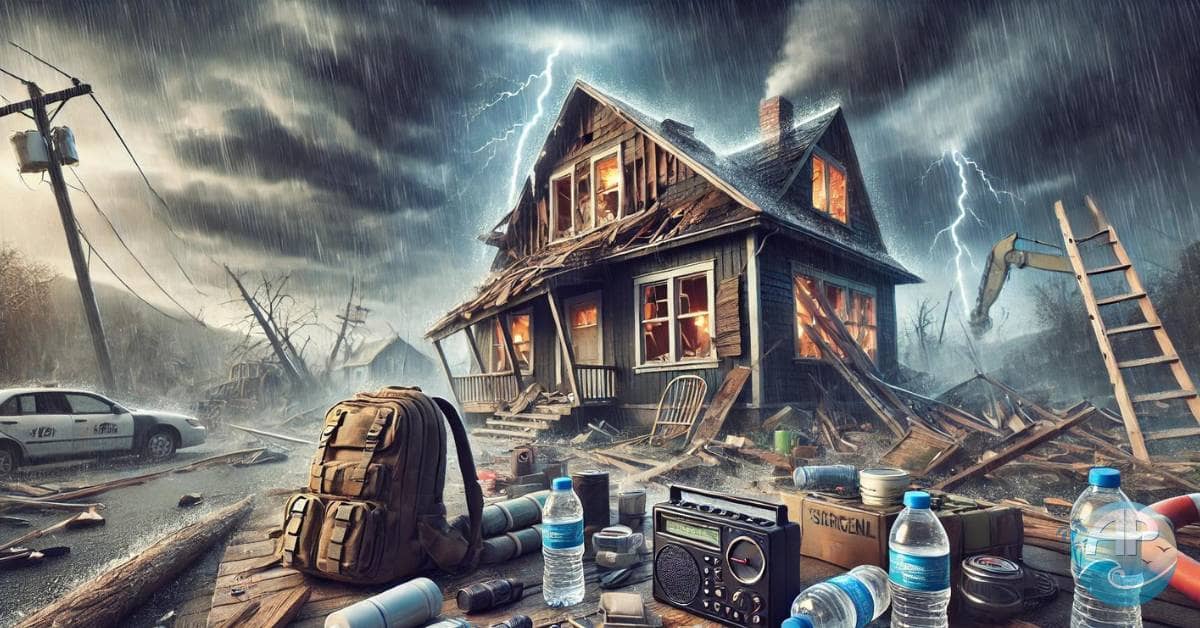Surviving the First 72 Hours: How to Stay Safe and Think Smart After a Crisis Hits
Table of Contents:
- Why the First 72 Hours Matter
- Think Before You Act
- Securing Shelter and Safety
- Gathering Essential Supplies
- Staying Informed and Connected
- The Mental Game: Stay Calm
When disaster strikes, every second counts. Surviving the first 72 hours can mean the difference between life and death. In those moments, having a plan is your greatest advantage. This blog post will break down what you need to know to navigate the chaos of those first critical hours.
So, what should you do?
Why the First 72 Hours Matter
The first 72 hours of any crisis are often the most chaotic. It’s when resources are stretched thin, help may not yet have arrived, and you’re left to fend for yourself. These early hours are crucial for securing safety and meeting basic needs.
Why? Because it’s the window when the situation is most unpredictable. Government assistance, rescue teams, and resources may take time to reach you. The first 72 hours are your responsibility.
“By failing to prepare, you are preparing to fail.” — Benjamin Franklin
This couldn’t be more true. Being ready ahead of time makes all the difference.
Assess the Situation: Think Before You Act
In the immediate aftermath of a disaster, your instinct might be to act quickly. But rushing into action can be dangerous. The first thing you need to do is assess your situation.
- Is there any immediate danger around you?
- Are you safe where you are, or do you need to relocate?
- Are there visible threats, like fire, floodwaters, or unstable structures?
Stay calm. Look around and make smart, deliberate decisions.
Tip: Don’t assume you’re safe just because the disaster has passed. Aftershocks, secondary events (like fires after earthquakes), and other risks may still be present.
Secure Shelter and Safety
Once you’ve assessed the situation, your next priority is securing shelter. In most disasters, having a safe, dry place to stay is crucial.
- If your home is safe, stay put.
- If it’s not, find the closest safe shelter—be it a neighbor’s home, a public building, or even a makeshift location.
If you’re in an area prone to aftershocks, floods, or other hazards, choose higher ground or a location far from unstable structures.
Semantic Keywords:
- Emergency shelter
- Survival plan
- Critical safety measures
Tip: If you’re not sure where the nearest safe zone is, having a map in your emergency kit is invaluable.
The Essentials: Gathering Your Supplies
Your go-bag is your best friend in the first 72 hours. But if you haven’t prepped one, there are still essentials you need to gather quickly.
Here’s what you should prioritize:
- Water: At least one gallon per person per day.
- Non-perishable food: Think protein bars, canned goods, or dried meals.
- First aid kit: Bandages, disinfectants, painkillers, and any essential medications.
- Flashlights and extra batteries: Power outages are common after disasters.
- Portable phone charger: Stay connected even when the power is out.
Having these essentials close by will not only help you survive but also keep your mind at ease knowing you’re prepared.
Staying Informed and Connected
In a disaster, information can mean the difference between safety and danger. Staying connected to emergency services, local news, and updates is essential. But don’t rely on your phone’s signal or Wi-Fi.
- Have a battery-powered or hand-crank radio to stay informed about the latest weather updates, evacuation orders, and rescue efforts.
- Keep a list of emergency contacts in your go-bag. Even if you can’t make calls, you’ll know who to contact once the lines are back up.
- Use walkie-talkies or a satellite phone if possible for longer communication disruptions.
It’s also important to stay in touch with your family and loved ones. Make sure everyone in your household knows where to meet if separated and how to communicate without cell phones.
Quote:
“Preparedness isn’t about knowing exactly what will happen—it’s about being ready for anything.”
The Mental Game: Keeping Calm and Focused
Surviving the first 72 hours isn’t just about having the right supplies. It’s about mental resilience. When everything feels chaotic, staying calm and focused will help you make better decisions.
The best way to build mental resilience is by mentally preparing before a crisis hits. This can include:
- Practicing mindfulness or meditation to reduce anxiety.
- Running through different disaster scenarios in your head so you know what to expect.
- Staying adaptable and open-minded, because not everything will go according to plan.
Tip: Remind yourself that panic won’t help. Taking deep breaths and making calm, rational decisions will.
For more strategies on mental readiness, check out Mental Preparedness: Smart Survival for Crisis Situations to stay sharp in any crisis.
The Ultimate Guide to Emergency Preparedness
For more in-depth survival strategies, check out our Guide to Emergency Preparedness and Self-Reliance. This guide walks you through how to create a foolproof survival plan, build a go-bag, and strengthen your mental and physical resilience. It’s the ultimate resource for anyone looking to stay prepared in uncertain times.
Surviving the first 72 hours requires preparation, calm thinking, and quick action. By following these steps, you can increase your chances of staying safe and protecting those you love in the chaos of a disaster. Don’t wait until it’s too late—get prepared now.


